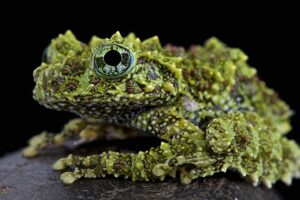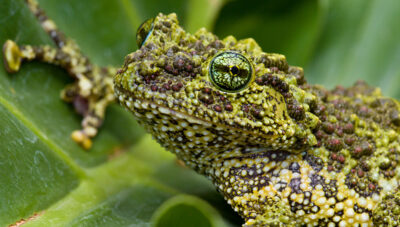Frog eyes are one of nature’s fascinating wonders, offering a vibrant array of colors that can vary greatly between species. So, what color are frogs’ eyes? While many of us might picture the common green or brown hues of frogs themselves, their eyes can be a spectrum of colors, ranging from golden yellows to deep reds, bright oranges, and even striking blues.
These colors are not just for show; they play an important role in a frog’s survival, helping them blend into their environments, communicate with other frogs, and detect predators. In this article, we’ll dive into the mesmerizing world of frog eye colors, exploring the reasons behind their diverse shades and what these colors mean in the wild.
Common Eye Colors in Frogs

Frogs display a wide variety of eye colors, each contributing to their unique and often striking appearance. Here are some common eye colors found in frogs:
- Golden/Amber: This is one of the most common eye colors in frogs. The vibrant golden or amber hues can be seen in species like the American bullfrog.
- Green: Many tree frogs, like the Red-eyed Tree Frog, have green eyes that help them blend into their leafy environments.
- Red: Some species, such as the Red-eyed Tree Frog, are famous for their bright red eyes, which are believed to startle predators.
- Brown: A variety of frog species have brown or dark-colored eyes, which can provide camouflage in muddy or earthy environments.
- Blue: Blue eyes are less common but can be found in certain species, such as the White’s Tree Frog. The color can range from light blue to turquoise.
- Orange: Some frogs, like the Tomato Frog, have eyes with a striking orange hue, adding to their vivid coloration.
- Black: Black or very dark eyes are also common and are seen in many nocturnal frog species. This eye color often helps reduce glare during night hunting.
- Yellow: Yellow eyes can be quite striking and are often seen in species like the Yellow-eyed Leaf Frog.
These eye colors can vary within species due to age, environmental factors, and even mood, contributing to the diverse and fascinating appearance of frogs in the wild.
Factors Influencing Frog Eye Color
Frog eye color is influenced by several factors, which contribute to the wide range of hues seen across different species. These factors include:
1. Species and Genetics
- Genetic Makeup: The primary determinant of eye color in frogs is their genetic makeup. Different species have evolved specific eye colors that provide advantages in their natural habitats.
- Evolutionary Adaptation: Eye color may evolve over time to enhance survival, such as by providing better camouflage or more effective communication within the species.
2. Habitat and Environment
- Camouflage: Eye color can help frogs blend into their surroundings, making it harder for predators to spot them. For example, frogs living in leafy environments might have green or brown eyes to match the foliage.
- Light Levels: Frogs that are active at night may have darker eyes to help reduce glare and improve night vision, while those in well-lit environments may have brighter eye colors.
3. Predator Avoidance
- Startle Effect: Brightly colored eyes, such as red or orange, can be used to startle predators. When a frog suddenly opens its eyes, the flash of color may scare away potential threats.
- Mimicry: Some frogs have eye colors that mimic the eyes of larger animals or other dangerous species, deterring predators.
4. Age and Development
- Ontogeny: Eye color can change as frogs mature. Some species start with one eye color as juveniles and develop a different color as adults, which may be linked to changes in their habitat or behavior.
5. Health and Stress
- Stress Response: A frog’s eye color can sometimes change temporarily due to stress or changes in its physiological state.
- Health Conditions: Illnesses or nutritional deficiencies can sometimes alter the pigmentation of a frog’s eyes.
6. Communication
- Mating Displays: In some species, eye color plays a role in attracting mates. Brighter or more intense eye colors can be a signal of health and vitality, making the frog more attractive to potential mates.
- Social Interaction: Eye color may also be used in social signaling between frogs, such as establishing dominance or territory.
These factors work together to create the fascinating array of eye colors seen in frogs, each serving specific roles in their survival and behavior.
The Role of Eye Color in Frog Behavior

Eye color in frogs plays a significant role in their behavior, influencing how they interact with their environment, communicate with other frogs, and avoid predators. Here’s how eye color contributes to various aspects of frog behavior:
1. Camouflage and Predator Avoidance
- Blending into the Environment: Eye color can help frogs blend into their surroundings, reducing their visibility to predators. For example, frogs with green or brown eyes are better camouflaged in leafy or muddy environments.
- Startle Reflex: Some frogs, like the Red-eyed Tree Frog, use their bright eye color to startle predators. When threatened, they suddenly open their eyes, revealing a flash of bright color that can startle a predator, giving the frog a chance to escape.
2. Communication and Social Interaction
- Mating Displays: Bright and distinct eye colors can be used to attract mates. For example, a male frog with vivid eye coloration may be more attractive to females, signaling good health and strong genetics.
- Territorial Signals: In some species, eye color might play a role in establishing dominance or signaling territory to other frogs. A brightly colored eye might intimidate rivals or deter intruders.
3. Nocturnal vs. Diurnal Behavior
- Night Vision: Frogs that are active at night (nocturnal) often have darker eye colors, which help reduce glare and improve their ability to see in low light. Dark eyes may also prevent predators from noticing them in the dark.
- Daytime Activity: Frogs active during the day (diurnal) might have lighter or brighter eye colors, which can be beneficial for navigating well-lit environments and may also play a role in thermoregulation by reflecting light.
4. Adaptive Responses
- Environmental Changes: Frogs may change their eye color in response to environmental conditions, such as light levels, to enhance their ability to see or avoid detection.
- Stress and Threat Response: A sudden change in eye color can signal distress or a readiness to flee. For instance, some frogs might darken their eyes when threatened to avoid drawing attention.
5. Foraging and Hunting
- Prey Detection: Eye color can influence a frog’s hunting efficiency. For example, frogs with eye colors that blend into their environment can better sneak up on prey without being detected.
- Focus and Precision: Eye color, along with eye shape and placement, can enhance a frog’s ability to focus on and capture moving prey, especially in environments with complex lighting.
6. Species Recognition
- Identifying Conspecifics: Eye color may help frogs identify members of their own species, which is important during mating season and in social interactions. This can prevent interspecies mating and help maintain species integrity.
How to Observe Frog Eye Colors
Observing frog eye colors can be a fascinating and educational experience, whether you’re a nature enthusiast, a student, or simply curious about these amphibians. Here’s how you can go about observing frog eye colors effectively:
1. Choose the Right Time
- Day vs. Night: Some frogs are more active during the day (diurnal), while others are active at night (nocturnal). To see the full range of eye colors, it’s helpful to observe frogs at different times of day. Nocturnal species might be easier to spot with a flashlight at night, while diurnal species can be observed in daylight.
2. Select the Right Environment
- Natural Habitats: Visit ponds, marshes, forests, or wetlands where frogs are commonly found. Different species inhabit different environments, so exploring various locations can expose you to a range of eye colors.
- Captive Settings: Zoos, aquariums, and reptile houses often have frogs in well-lit enclosures, making it easier to observe their eye colors up close.
3. Use the Right Equipment
- Binoculars: A pair of binoculars can help you observe frogs from a distance without disturbing them. This is especially useful for spotting eye colors in frogs that are skittish or difficult to approach.
- Camera with Zoom: A camera with a good zoom lens can capture close-up shots of frog eyes, allowing you to study the colors later in detail.
- Flashlight: For nocturnal observations, use a flashlight with a red filter (to avoid startling the frogs) to illuminate their eyes and bring out their colors.
4. Approach Carefully
- Move Slowly and Quietly: Frogs are sensitive to movement and sound. Approach them slowly and quietly to avoid scaring them away. If you’re too abrupt, they might hide or jump into the water, making observation difficult.
- Minimize Disturbance: Try to observe frogs without touching or handling them. Handling can stress the frogs and cause them to close their eyes or change behavior, which might obscure their eye color.
5. Observe in Different Lighting Conditions
- Natural Light: Observe frogs in different natural lighting conditions, such as bright sunlight, overcast skies, and shaded areas. The way light reflects off their eyes can affect how their colors appear.
- Artificial Light: Use a flashlight or other light sources at night to observe how their eyes reflect the light. This can reveal colors and patterns not visible in daylight.
6. Document Your Observations
- Take Notes: Write down the species, location, time of day, and any other relevant information about the frogs you observe. Note any changes in eye color based on lighting or behavior.
- Photograph or Sketch: If possible, take photos or make sketches of the frogs’ eyes. This can be useful for later study and comparison.
7. Research and Compare
- Identify the Species: Use field guides or online resources to identify the species of frogs you’re observing. Knowing the species can provide insight into why their eyes are a certain color.
- Compare Across Species: Observe and compare eye colors across different species to understand the diversity and significance of eye color in frogs.
8. Safety and Ethics
- Respect Wildlife: Always respect the frogs and their habitats. Avoid disturbing their environment or stressing the animals.
- Personal Safety: Be mindful of your surroundings, especially when observing frogs in the wild at night. Be cautious of water bodies, insects, and other wildlife.
By following these steps, you can observe and appreciate the fascinating variety of eye colors in frogs while also gaining a deeper understanding of their behavior and adaptations.
Conclusion
Frog eyes come in a wide variety of colors, including golden, green, red, brown, blue, orange, black, and yellow. So, what color are frogs eyes? The specific color often depends on the species, habitat, and evolutionary adaptations.
These eye colors serve various purposes, from camouflage and predator avoidance to communication and mating displays. Each color plays a unique role in helping the frog survive and thrive in its environment.

